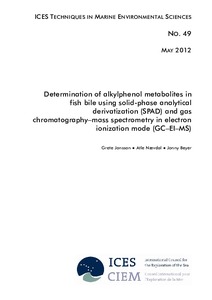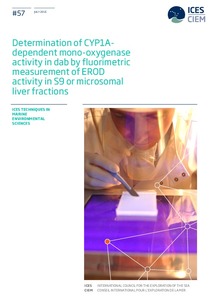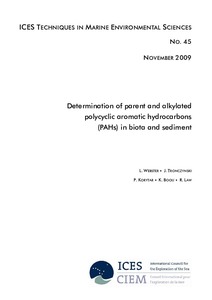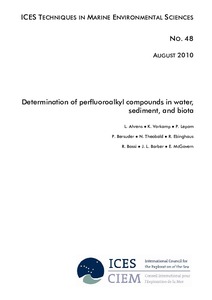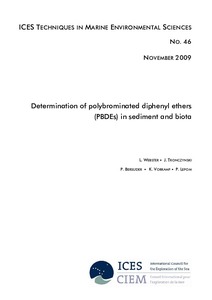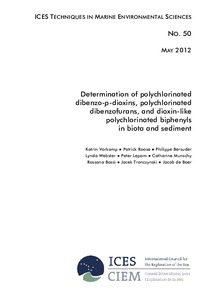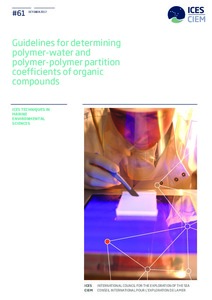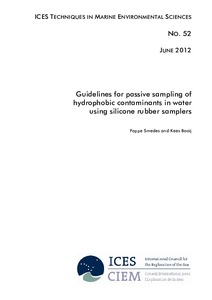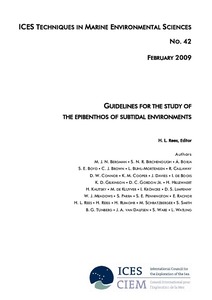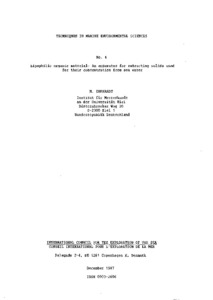Browsing ICES Techniques in Marine Environmental Sciences by Title
Now showing items 21-40 of 58
-
Chemical measurements in the Baltic Sea: guidelines on quality assurance.
(International Council for the Exploration of the Sea (ICES), Copenhagen, Denmark, 2004)This document provides an introduction to quality issues, in general, and quality assurance in Baltic marine monitoring laboratories, in particular. The guidelines are intended to assist laboratories in starting up and ... -
Chlorobiphenyls in marine sediments: Guidelines for determination.
(International Council for the Exploration of the Sea (ICES), Copenhagen, Denmark, 1998)The analysis of chlorinated biphenyls in sediments generally includes extraction with organic solvents, clean-up, removal of sulphur, colullUl fractionation and gas chromatographic separation, mostly with electron capture ... -
Chlorophyll a: Determination by spectroscopic methods.
(International Council for the Exploration of the Sea (ICES), Copenhagen, Denmark, 2001)Chlorophyll a is the principal pigment in plants. As a biomass indicator of aquatic microalgae which support food webs in the sea, it is probably the most frequently measured biochemical parameter in oceanography. This ... -
Common diseases and parasites of fish in the North Atlantic: Training guide for identification.
(International Council for the Exploration of the Sea (ICES), Copenhagen, Denmark, 1996)During the past 20 years, there has been an increasing number of field surveys investigating the occurrence and distribution of fish diseases as a tool for monitoring the effects of environme ... -
Contaminants in marine organisms: Pooling strategies for monitoring mean concentrations.
(International Council for the Exploration of the Sea (ICES), Copenhagen, Denmark, 1996)Samples of marine organisms collected for contaminant monitoring are often pooled before being chemically analysed. The main reasons for pooling samples are: 1) to obtain a sufficient quantity ... -
Control procedures: Good laboratory practice and quality assurance.
(International Council for the Exploration of the Sea (ICES), Copenhagen, Denmark, 1987)Good Laboratory Practice (GLP) is one of the manifestations of the increased attention being paid to quality control measures in general. It provides a framework designed to bring the quality ... -
Determination of alkyl phenol metabolites in fish bile using solid-phase analytical derivatization (SPAD) and gas chromatography-mass spectrometry in electron ionization mode (GC-EI-MS).
(International Council for the Exploration of the Sea (ICES), Copenhagen, Denmark, 2012)This document provides advice on the analysis of alkylphenol (AP) metabolites in fish bile. APs are released to aquatic environments from many different sources related to human activities, such as offshore oil production. ... -
Determination of CYP1A-dependent mono-oxygenase activity in dab by fluorimetric measurement of EROD activity in S9 or microsomal liver fractions.
(International Council for the Exploration of the Sea (ICES), Copenhagen, Denmark, 2016)This paper describes a method for the determination of cytochrome P4501A (CYP1A) in fish liver fractions by the measurement of 7-ethoxyresorufin O-deethylase (EROD) activity. The proposed method is by fluorescent assay of ... -
Determination of Hexabromocyclododecane (HBCD) in sediment and biota.
(International Council for the Exploration of the Sea (ICES), Copenhagen, Denmark, 2010)This document provides advice on the analysis of hexabromocyclododecane (HBCD) in sediment and biota. The analysis of HBCD in sediment and biota generally involves extraction with organic solvents, clean‐up, and either ... -
Determination of parent and alkylated polycyclic aromatic hydrocarbons (PAHs) in biota and sediment.
(International Council for the Exploration of the Sea (ICES), Copenhagen, Denmark, 2010)This document provides advice on the analysis of parent and alkylated polycyclic aromatic hydrocarbons (PAHs) in total sediment, sieved fractions, suspended particulate matter, and biota (shellfish). The determination ... -
Determination of perfluoroalkyl compounds in water, sediment, and biota.
(International Council for the Exploration of the Sea (ICES), Copenhagen, Denmark, 2010)This document provides advice on the analysis of polyfluoroalkyl compounds (PFCs) in samples of water, sediment, and biota. The analysis of PFCs in these matrices generally includes extraction with organic solvents, clean‐up, ... -
Determination of polybrominated biphenyl ethers (PBDEs) in sediment and biota.
(International Council for the Exploration of the Sea (ICES), Copenhagen, Denmark, 2009)This document provides advice on the analysis of polybrominated diphenyl ethers (PBDEs) in biota and sediment. The determination of PBDEs in sediment and biota generally involves extraction with organic solvents, clean‐up, ... -
Determination of polychlorinated biphenyls (PCBs) in sediment and biota.
(International Council for the Exploration of the Sea (ICES), Copenhagen, Denmark, 2013)Polychlorinated biphenyls (PCBs) are environmental contaminants regulated by the Stockholm Convention of Persistent Organic Pollutants (POPs), and are included on the OSPAR List of Chemicals for Priority Action due to their ... -
Determination of polychlorinated dibenzo-p-dioxins, polychlorinated dibenzofurans, and dioxin-like polychlorinated biphenyls in biota and sediment.
(International Council for the Exploration of the Sea (ICES), Copenhagen, Denmark, 2012)Polychlorinated dibenzo‐p‐dioxins, polychlorinated dibenzofurans (PCDD/Fs) and polychlorinated biphenyls (PCBs) are environmental contaminants regulated by the Stockholm Convention of Persistent Organic Pollutants. Being ... -
Guidelines for determining polymer-water and polymer-polymer partition coefficients of organic compounds.
(International Council for the Exploration of the Sea (ICES), Copenhagen, Denmark, 2017)Methods for the experimental determination of polymer-water partition coefficients (Kpw) and polymer-polymer partition coefficients (Kp1p2) are reviewed with the aim to improve the quality of passive sampling-based monitoring ... -
Guidelines for passive sampling of hydrophobic contaminants in water using silicone rubber samplers.
(International Council for the Exploration of the Sea (ICES), Copenhagen, Denmark, 2012)This ICES Techniques in Marine Environmental Sciences provides advice on the use of silicone rubber passive samplers for the determination of freely dissolved non‐polar contaminants in seawater. The level of detail offered ... -
Guidelines for the study of the epibenthos of subtidal environments.
(International Council for the Exploration of the Sea (ICES), Copenhagen, Denmark, 2009)These Guidelines for the Study of the Epibenthos of Subtidal Environments document a range of sampling gears and procedures for epibenthos studies that meet a variety of needs. The importance of adopting consistent sampling ... -
Hydrocarbons: Review of methods for analysis in sea water, biota, and sediments.
(International Council for the Exploration of the Sea (ICES), Copenhagen, Denmark, 1991)The overview presented in the following paragraphs is not a collection of analytical procedures in the sense of a 'cookbook'. It is intended as an introduction to the subject and a collecti ... -
Lipophilic organic material: An apparatus for extracting solids used for their concentration from sea water.
(International Council for the Exploration of the Sea (ICES), Copenhagen, Denmark, 1987)Lipophilic organic substances, whether man-made, mobilized by human activities, or of recent natural origin, are usually dissolved in sea water at such minute concentrations that the chemical c ... -
Lysosomal membrane stability in mussels.
(International Council for the Exploration of the Sea (ICES), Copenhagen, Denmark, 2015)In 2012, the ICES Study Group on Integrated Monitoring of Chemicals and their Effects provided a framework for integrated monitoring to the OSLO-Paris Commission. UNEP/MAP and HELCOM expert groups have also developed ...
 Repository of community practices in Ocean Research, Applications and Data/Information Management
Repository of community practices in Ocean Research, Applications and Data/Information Management






